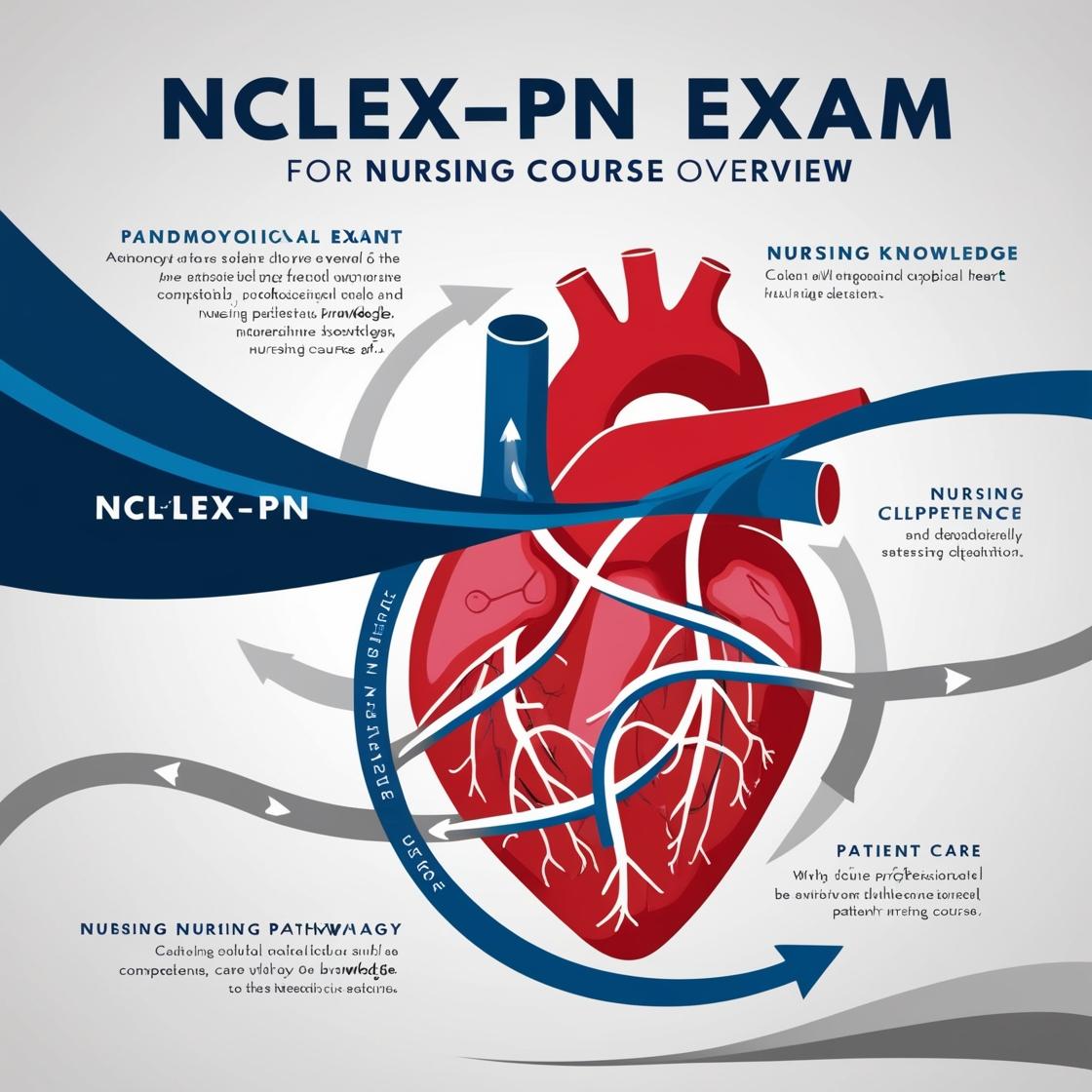NCLEX-PN
Quizlet NCLEX PN 2023
1. Which of the following needs immediate medical attention and emergency intervention? The client who:
- A. complains of sharp pain upon taking a deep breath and excessive coughing.
- B. exhibits yellow, productive sputum, low-grade fever, and crackles.
- C. has a shift of the trachea to the left, with no breath sounds on the right.
- D. has asthma and complains of an inability to catch her breath after exercise.
Correct answer: C
Rationale: Choice C is indicative of a tension pneumothorax, which is considered a medical emergency. The respiratory system is severely compromised, and venous return to the heart is affected. The mediastinal shift is to the unaffected side, indicating a critical situation that requires immediate intervention to prevent further deterioration. This condition can rapidly progress to a life-threatening state, necessitating prompt medical attention. Choices A, B, and D do not present with life-threatening conditions requiring emergency intervention. Choice A mentions symptoms of pleurisy, which may be painful but not immediately life-threatening. Choice B describes symptoms of bronchitis, which may require medical attention but not of an emergent nature. Choice D reflects a common complaint in asthma but does not suggest an immediate life-threatening situation unless severe respiratory distress is present.
2. During a stress test, a patient complains of severe chest pain. Which of the following medications is the most appropriate to relieve this discomfort?
- A. Aspirin
- B. Diazoxide
- C. Procardia
- D. Mannitol
Correct answer: C
Rationale: In this scenario, the most appropriate medication to relieve severe ischemic chest pain during a stress test is Procardia. Procardia, a calcium channel blocker, is effective in quickly alleviating chest pain by dilating coronary arteries, improving blood flow to the heart muscle. Aspirin, although important for antiplatelet effects, is not the best choice for immediate relief of severe chest pain. Diazoxide is a vasodilator used in hypertensive emergencies, not for acute chest pain. Mannitol is an osmotic diuretic used to reduce intracranial pressure, not for chest pain relief.
3. A nurse is teaching a client newly diagnosed with Emphysema about the disease process. Which of the following statements best explains the problems associated with emphysema and could be adapted for use in the nurse's discussion with the client?
- A. Hyperactivity of the medium-sized bronchi caused by an inflammatory response leads to wheezing and tightness in the chest.
- B. Larger than normal air spaces and loss of elastic recoil cause air to be trapped in the lung and collapse airways.
- C. Vasodilation, congestion, and mucosal edema cause a chronic cough and sputum production.
- D. Chloride is not being transported properly, producing excess absorption of water and sodium, and thick viscous mucus
Correct answer: B
Rationale: The correct answer is: 'Larger than normal air spaces and loss of elastic recoil cause air to be trapped in the lung and collapse airways.' Emphysema is a breakdown of the elastin and fiber network of the alveoli where the alveoli enlarge or the walls are destroyed. This alveolar destruction leads to the formation of larger-than-normal air spaces. Emphysema is one of a group of pulmonary diseases of a chronic nature characterized by increased resistance to airflow; the entity is part of chronic obstructive pulmonary disease (COPD). Choice A is incorrect because emphysema is not primarily characterized by hyperactivity of the medium-sized bronchi causing wheezing and tightness in the chest. Choice C is incorrect because vasodilation, congestion, and mucosal edema are not the primary mechanisms involved in emphysema, and they do not directly lead to chronic cough and sputum production. Choice D is incorrect because emphysema is not related to chloride transport issues and thick viscous mucus production.
4. A 28-year-old male has a diagnosis of AIDS. The patient has had a two-year history of AIDS. The most likely cognitive deficits include which of the following?
- A. Disorientation
- B. Sensory changes
- C. Inability to produce sound
- D. Hearing deficits
Correct answer: A
Rationale: In individuals with AIDS, cognitive deficits commonly manifest as confusion and disorientation, making choice A, 'Disorientation,' the correct answer. Sensory changes (choice B) and hearing deficits (choice D) are more related to sensory processing rather than cognitive impairment. 'Inability to produce sound' (choice C) is more indicative of a speech or language deficit rather than a cognitive impairment typically seen in AIDS patients.
5. A patient has been diagnosed with diabetes mellitus. Which of the following is not a clinical sign of diabetes mellitus?
- A. Polyphagia
- B. Polyuria
- C. Metabolic acidosis
- D. Lower extremity edema
Correct answer: D
Rationale: Polyphagia, polyuria, and metabolic acidosis are common clinical signs of diabetes mellitus. Polyphagia refers to excessive hunger, polyuria is excessive urination, and metabolic acidosis can occur due to poorly controlled diabetes. Lower extremity edema, on the other hand, is not a typical clinical sign of diabetes mellitus. Edema in the lower extremities is more commonly associated with conditions like heart failure or kidney disease rather than diabetes mellitus.
Similar Questions

Access More Features
NCLEX PN Basic
$69.99/ 30 days
- 5,000 Questions with answers
- Comprehensive NCLEX coverage
- 30 days access @ $69.99
NCLEX PN Premium
$149.99/ 90 days
- 5,000 Questions with answers
- Comprehensive NCLEX coverage
- 30 days access @ $149.99
